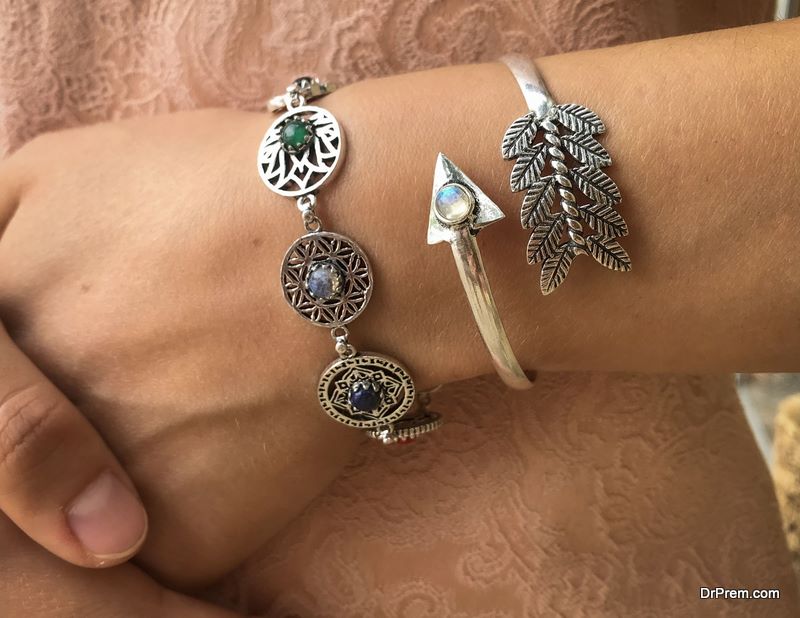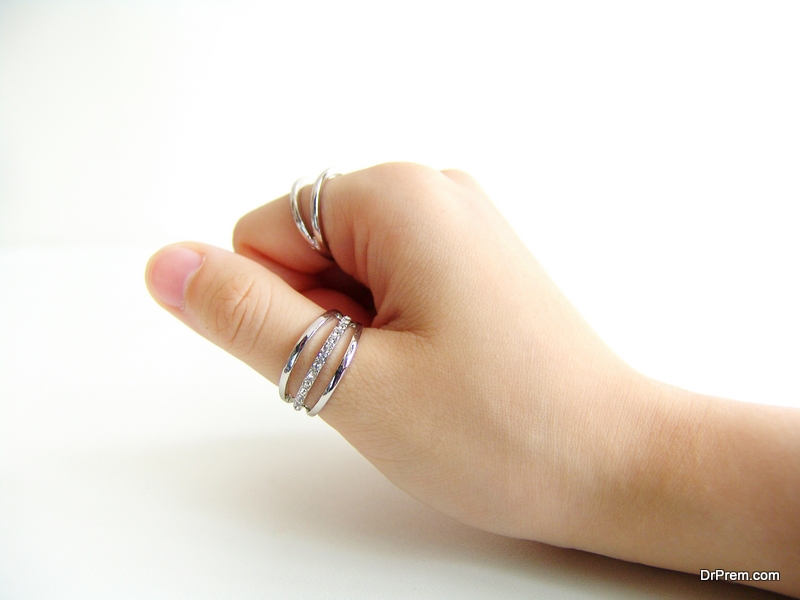In the world of fashion, reason often gives way to whimsy. People are notoriously prone to wearing the latest trends and discarding them when they go out of style.
Yet, we know that there’s a method to the madness. Groupthink doesn’t rule everyone. Some people have a sense of style that’s timeless. It allows them to put together outfits that work, time and again. The skill of discernment can be developed by evaluating pieces carefully to see if they might work for you.
A recent trend worth looking at is the rise in the popularity of stackable jewelry. Is this just another blip on the radar, or is it something you can invest in, knowing it will have a place among your future looks?
A form of personalization

Layered necklaces were historically common, as the neck is a conspicuous area for displaying materials that communicate status. Both men and women among elite classes and certain occupations would stack jewelry around the neck for this purpose.
However, in Western cultures, wearing jewelry eventually became a feminine purview. The growing fashion industry became more critical of extraneous elements, exemplified by Coco Chanel’s famous quote: “Before you leave the house, look in the mirror and take one thing off.”
This enhances the impression that stacking jewelry is a modern trend when it’s simply witnessing resurgence. That uptick has coincided with the rise of the millennial generation and its demand for personalization.
Millennials are known to crave authenticity. Growing up with the internet and social media has empowered them to be creators as well as critics, and this extends to their fashion choices. Forgoing precious metals, affordable materials such as silicone allow the younger generation to wear stacked custom-made bracelets and rings that better express their individuality.
And from there, being digital natives, they share images on social media, creating a positive feedback loop of influence. Men, in particular, are more likely to translate such visual inspiration to purchase action, driving steady growth in the men’s jewelry segment.
Going by design principles
The evidence suggests that wearing more jewelry in layers and stacks isn’t really a new trend, but in its latest incarnation, it has become anchored to the market’s biggest demographic. That’s an indication of staying power. Gen Z, for instance, shares many qualities with millennials, including an affinity for social media, self-expression, and an even greater desire for truth and authenticity.
Beyond its demographic associations, however, the aesthetic of stacking jewelry also has merit from a design perspective.
In fashion, the major elements of design that are typically used are shape, line, color, and texture. These are what designers work with to generate interest and communicate personality, emphasizing certain qualities while concealing others.
Outside of fashion shows, however, most people wear clothes that have to be functional to some extent. Clothing is made mostly of fabric because it’s the best material for people to move in and feel comfortable while doing so. This material emphasis places limits on the creative flexibility of clothing designers.
Accessories are a solution to this conflict. They take the issue out of the clothing designer’s hands by giving the consumer the choice of what to buy and wear. At your discretion, accessories can be used to provide visual relief, serve as a focal point of our attention, or complement the look. And with stacking now seen as an acceptable option for everyone, your creative choices are limitless.
Acquired taste
In theory, the growing popularity of stackable, mix-and-match jewelry stands on firm footing with respect to design. But in practice, you still have to get it right.
Having the ability to communicate freely through the way you dress means knowing what you want to express in the first place.
Hip-hop culture offers an example of how easy it is to get this balance wrong. Popular rappers wear loads of bling as a projection of their success, based on hard work towards their passion. People who imitate them to display wealth ostentatiously are doomed to fashion failure.
As with any trend, even if it works for you, don’t start layering jewelry just for the sake of riding the bandwagon. It’s an acquired taste in the sense that you have to think about it carefully. Which pieces go well together with the rest of your outfit? What should catch the viewer’s eye, and what might clash with that?
Keeping Chanel in mind, uphold quality over quantity. That way, you can compose a look made of layers and stacks that’s greater than the sum of its parts.
Article Submitted By Community Writer





